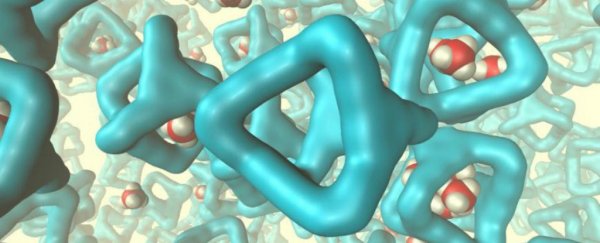You're probably familiar with porous rocks – rocks that can hold and filter liquids – and now scientists from Queen's University in Belfast have created a synthetic liquid with similar properties. The newly developed substance has a huge range of potential uses, including being able to capture harmful carbon emissions to prevent them from entering the Earth's atmosphere.
The porous liquid collects and absorbs gas through its pores, and researchers think it could open up new ways to collect and filter chemicals without relying on solid materials for the job: that obviously gives manufacturers and scientists much more flexibility.
The substance is still under development but the academics from Queen's University, together with colleagues from across the world, are confident in the results they've seen so far.
"Materials which contain permanent holes, or pores, are technologically important," explained Stuart James, one of the lead researchers. "They are used for manufacturing a range of products from plastic bottles to petrol. However, until recently, these porous materials have been solids."
"A few more years' research will be needed, but if we can find applications for these porous liquids they could result in new or improved chemical processes," he adds. "At the very least, we have managed to demonstrate a very new principle – that by creating holes in liquids we can dramatically increase the amount of gas they can dissolve. These remarkable properties suggest interesting applications in the long term."
The team of scientists designed their liquid from the bottom up, shaping the molecules themselves (actually called "cage molecules") so they would be unable to fill all the space available to them.
Once the holes had been pre-programmed into the liquid, researchers found it was able to dissolve unusually large amounts of gas. Any process which requires dissolution of gases could potentially make use of the new substance.
Carbon capture is the example use quoted by the team of scientists: imagine a power plant where running liquid is used to absorb the gas emissions from the power production process and carry them safely away. It has taken the group of researchers three years to get to this point and they're hopeful that more improvements can be made.
The full potential of this porous liquid won't be clear for some time, but the breakthrough is a significant one that could aid all kinds of environmentally sensitive projects. The findings of the research team have been published in the journal Nature.
